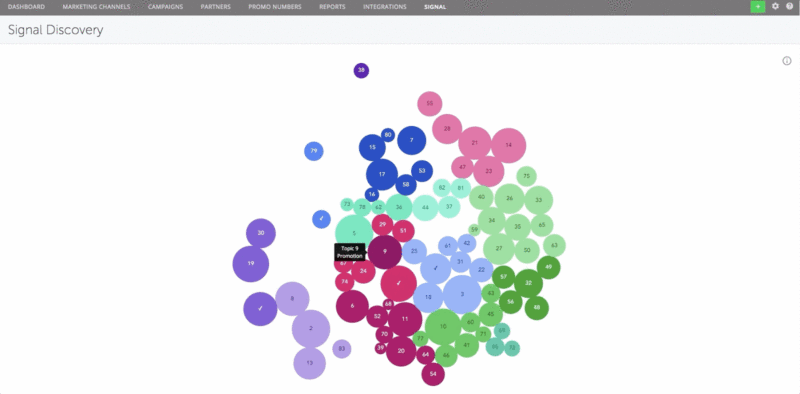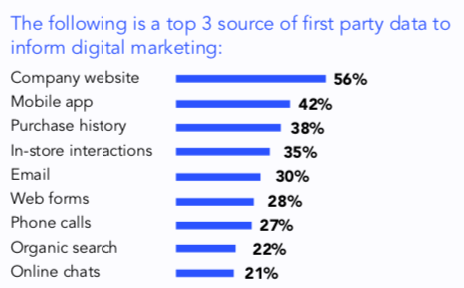Invoca ‘Signal Discovery’ promises automated optimization from predictive call intelligence
Calls are an important source of first-party data, often neglected by marketers.
Call intelligence company Invoca has released a new call analytics tool called “Signal Discovery.” It uses machine learning/AI to cluster calls into topics and reveal insights about customer interactions and the efficacy of campaigns. It can also help automate marketing optimization based on call content without human involvement, according to the company.
Growing importance of first-party data. Prospect and customer phone calls are a huge and largely unexploited source of first party data that will become more important to brands and marketers as CCPA kicks in next year. While it’s not entirely clear how much third party data will be lost; first party data has become a much more valuable asset in the wake of privacy regulation and legislation. According to survey data from Invoca, a majority (56%) of marketers don’t know the content or outcomes of their customer service and sales calls.

Signal Discovery presents marketers with a “call map” (see above) that visually represents similar conversations as topic bubbles that can be more closely explored, with the ultimate ability to listen to individual recordings. According to the company, Signal Discovery will “listen” to every call and use unsupervised learning to generate these conversation clusters. It can then “predict occurrences in future conversations . . . based on similarities in speech patterns” from past calls. Marketing can be optimized and automated on that basis, accordingly.
Marketer challenges: data quality and too much volume. In coordination with the announcement of Signal Discovery, Invoca released survey findings about marketer data usage and sophistication. The company polled 500 business-to-consumer marketers, with annual budgets of over $1 million “across a range of companies and industries.” The marketers surveyed had at least three years of experience.
The most common sources of first-party data for these marketers were: 1) company websites, 2) mobile apps, 3) purchase data, 4) in-store interactions and 5) email.

Asked what challenges they faced in using data to optimize campaign performance, these marketers said data quality and then privacy in that order. However, just under a third cited “too much data” as a problem. This latter issue was a bigger concern for more seasoned marketers (11+ years of experience) vs. those with less experience. For the less experienced group, data accuracy and quality were the biggest challenges.

Seeking greater efficiency with AI. The survey explored a number of other issues, including AI-tool adoption. The top use case cited was efficiency — to help improve spending decisions for marketing campaigns. After that, responses included mining customer data, message personalization and audience segmentation.

A separate 2018 survey from Fospha found that less than 10% of marketers said their use and understanding of data-driven attribution was “excellent,” while roughly 29% said it was “good.” The rest of respondents said it was “neutral” to “very poor.” These findings are generally consistent with marketer sentiment about challenges regarding data understanding usage in the Invoca study.
Why we should care. As a basic matter, marketers that sell over the phone or offline aren’t getting a complete picture of how their campaigns are performing if they’re not tracking phone calls. Dynamic number insertion, which is widely used today, prevents tracking numbers from being crawled or used to replace existing phone numbers, so NAP consistency or “pollution” aren’t issues SEOs have to worry about any longer.
Beyond simple call tracking, the content of calls are a potential goldmine of first-party customer insights that have all kinds of implications for media planning, campaign optimization, content creation, customer service, business operations, even product development. In addition, as the Signal Discovery announcement indicates, call tracking is evolving beyond simple attribution into much more sophisticated “conversational intelligence.”
Contributing authors are invited to create content for Search Engine Land and are chosen for their expertise and contribution to the search community. Our contributors work under the oversight of the editorial staff and contributions are checked for quality and relevance to our readers. The opinions they express are their own.
Related stories